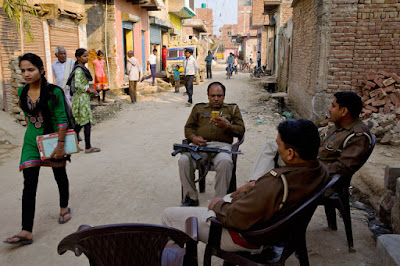[India India
By Katie Rogers
 |
Police officers near a house
where a 15-year-old girl was set on fire
after being raped in
Credit Saurabh Das/Associated
Press
|
Officials
in India GPS by 2018.
The
announcement in April by Ravi Shankar Prasad, India India
How
would the panic button and GPS work?
It
is not clear how this change would be put in effect or how manufacturers would
create a panic button.
Two
of the country’s largest phone suppliers, Samsung and Apple, would not comment
on the policy change. Lava, a fast-growing Indian telecommunications company; the
Indian Cellular Association; and the Ministry of Communications and Information
Technology also did not respond to multiple requests for comment.
Kiranjeet
Kaur, an analyst with International Data Corporation, a global market research
firm, said that India India India GPS . Adding such functions, Mr. Kaur said, could
raise the price of phones by at least 50 percent.
He
noted that several companies already offered options like those proposed.
“There
are a few apps that can be used on smartphones that serve the same function as
a panic button,” Mr. Kaur wrote in an email. “The Uber app in India India
But
Maneka Sanjay Gandhi, India
How
do similar services work?
One
Touch Response, a subscription-based service, can deploy employees to escort
people home or go to their aid when they are summoned via an app or a phone
call.
Arvind
Khanna, the company’s founder, said in an email that the need for personal
safety in India
“We
currently serve over 35,000 paid subscribers along with hundreds of ‘Pay As You
Go’ users,” he wrote. “Over 40 percent of our users are women.”
What
are the obstacles?
“Let
them study, get married, then they can get their own phones,” Ranjit Singh
Thakor, president of a local council, told the news service. “Until then, they
can use their fathers’ phones at home, if necessary.”
Also
unanswered by officials is the matter of which service will answer the distress
calls. A gang rape in 2012 drew a nationwide outcry, but Indian women who
report their attacks still face understaffed police forces that operate on
bribes, a court system that is backlogged with cases and a culture more focused
on protecting the victims’ modesty than with catching and prosecuting attackers.
“If
you’re a woman in distress, the last thing you want to do is go to the police,”
Vrinda Grover, a human rights lawyer based in New Delhi, told The New York
Times in 2013.

